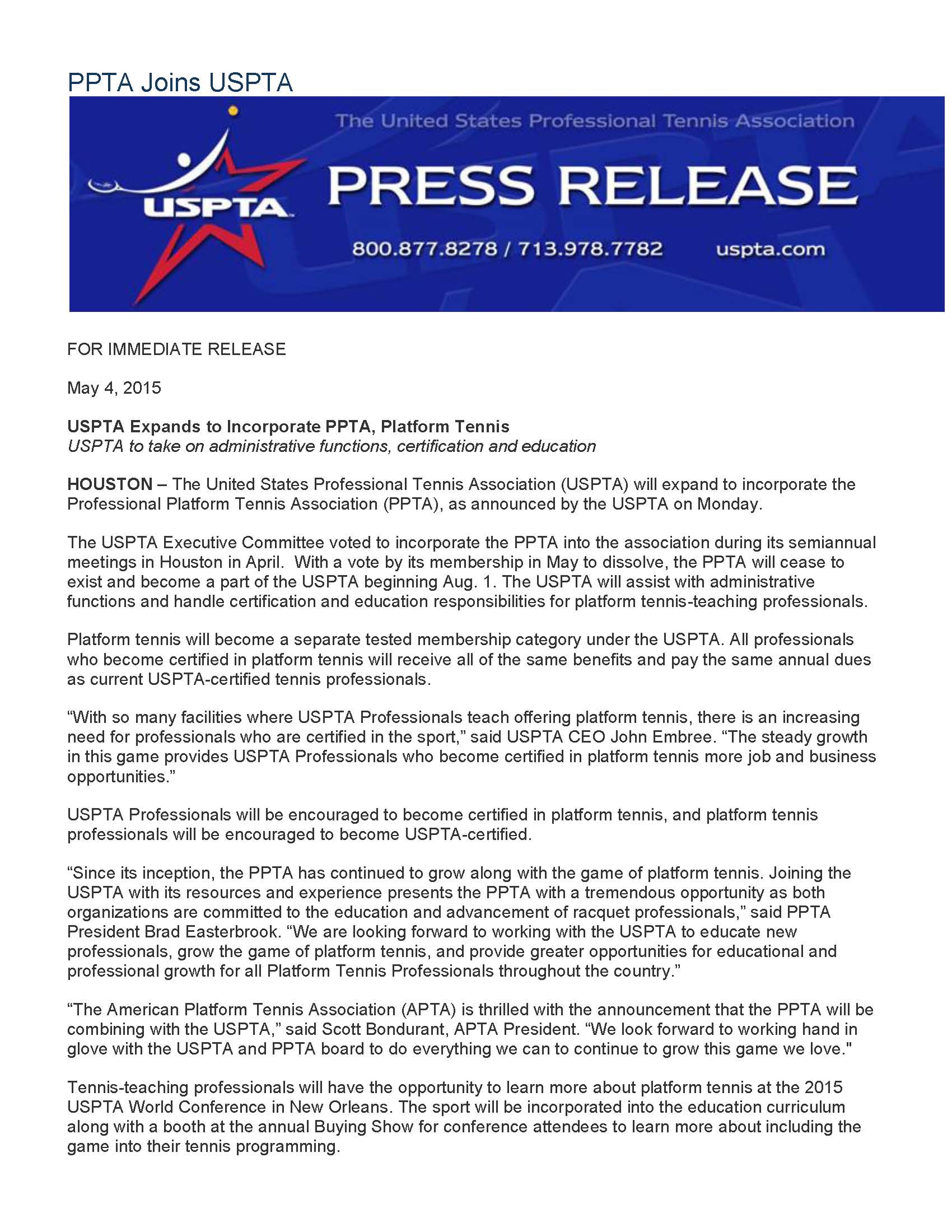Over the years the American Platform Tennis Association (APTA) has done a lot for the sport that most people don’t realize. Along the way its successes have outnumbered its miscues.
The primary responsibility of the group is to organize sanctioned tournaments and manage them throughout the season. In addition, they are responsible for the standards and rules of the sport.
About 25 years ago the APTA Board thought it would be a good idea to add a Mixed Doubles Presidents Cup. MISCUE!
On several occasions the APTA has supported singles and singles tournaments. Both are good ideas that the members didn’t support.
The APTA Board also legalized the carry and set guidelines for the size of a paddle and its number of holes. As well, the group resolved a dispute about the amount of grit on a paddle and decided that a let serve should be playable.
Considering its financial constraints, the APTA Board has done a commendable job in its most basic role-maintaining the rules, standards, and infrastructure of the sport.
Over the last forty years, the APTA has made three decisions that have had a lasting impact on the sport. As we celebrate the sport’s 80th birthday, it seems appropriate to recognize those decisions and how they have impacted the sport today.
President’s Cup – In the late 1970s platform tennis was at its peak in terms of participation. Passport Scotch was the sponsor of the pro tour and Hertz was secured as a sponsor for a first-time event called the President’s Cup. The Cup was separate from the National Championships, it was held over two days, and most importantly, it targeted the weekend player.
After its inception, the event went through a series of sponsors and no-sponsors. Each year the APTA board had to wrestle with the definition of a “weekend player” and how to move the event forward for the next season. Initially the event was held only for men, but after several years it was expanded to include women.
The event strengthened the level of play in all APTA regions. For example, players from the Western Region (it was called Region V at that time) would make their annual pilgrimage to the Cup where they improved their skills and took their new-found knowledge back home to share with their peers. Over time, the number of good players improved dramatically in all parts of the country, as the Cup motivated the “weekend” players to play in regional tournaments so they could qualify to play in the President’s Cup.
As a two-day event, with sponsors, the President’s Cup was arguably one of the most competitive and exhilarating competitions in the country.
President’s Cup and Nationals – During the 1980s the men’s draws for the National Championships went through a period when the number of entrants declined. To bolster participation the APTA board voted to kill the President’s Cup as a two-day event, change its format, and host the competition prior to the National Championships (The women’s Cup was held on Thursday and the men’s Cup on Friday). By doing that they ensured that the top 25 “weekend” teams would be at the event.
It was sad to see the elimination of the President’s Cup as its own event, but the decision by the board bolstered the National Championships. Participation at most National Championships since that time has been a full 128 draw that was deep in talent.
Men’s and Women’s APTA Nationals – Those who have played the Nationals over the past 25 years have experienced the event as the championships for both the men and the women.
Prior to the 1980s that was not the case.
At an APTA Board meeting a contentious discussion was held about whether to merge the two events. One side of the room argued that there were not enough courts at the clubs, the women wouldn’t be treated equally, the women don’t like to play on certain days. In short, IT JUST WOULDN’T WORK.
The sentiment from the other side of the room was that a merger would put the women in the spotlight, it would make for greater camaraderie, and it would increase the chances for sponsorship. In short, THE APTA HAD TO FIND A WAY TO MAKE IT WORK.
The latter won the argument.
The three decisions made by the APT board took place over a period of about ten years (late 1970s to late 1980s). The Board did what they thought was best for the game at that time.
In retrospect these decisions helped strengthen the foundation of the sport for both men and women players. The sport as we know it today wouldn’t be the same if the APTA Board had not initiated the President’s Cup, integrated it into the National Championships weekend, and combined the Men’s and Women’s Nationals.




